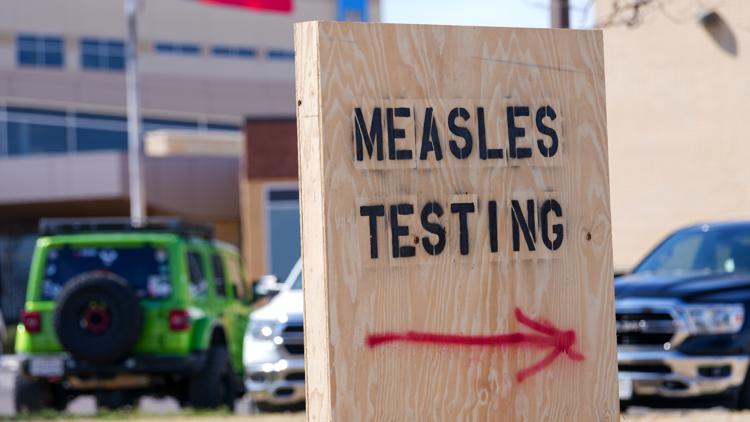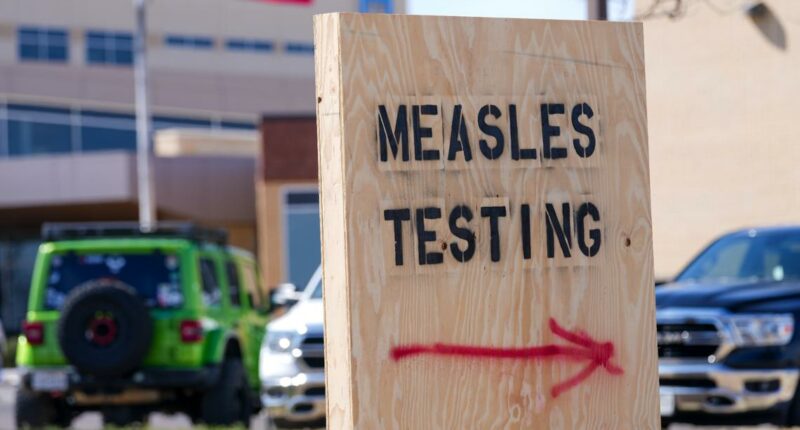Share this @internewscast.com

Eighteen states have seen outbreaks this year.
USA — The United States is facing its most severe measles outbreak in more than thirty years, recording a total of 1,288 cases nationwide with another six months remaining in 2025.
The U.S. Centers for Disease Control and Prevention announced on Wednesday that the national case total has exceeded the numbers reported in 2019, when there were 1,274 cases throughout the year, nearly causing the country to lose its status of having eliminated the vaccine-preventable disease. This status is again at risk if the virus continues to spread continuously for a year.
The outbreaks this year, some of which are related, commenced five months ago in communities in West Texas that have low vaccination rates. Three individuals have died—two children in Texas and one adult in New Mexico—while numerous others have been hospitalized. Public health officials believe the actual number of cases may surpass those confirmed by state health departments.
North America has three other major measles outbreaks, with 2,966 cases in Chihuahua state, Mexico, 2,223 cases in Ontario, Canada and 1,230 in Alberta, Canada. Thirteen other states have current confirmed outbreaks of three or more people — Arizona, Colorado, Georgia, Illinois, Iowa, Kansas, Michigan, Missouri, Montana, New Mexico, North Dakota, Oklahoma and Utah — and four other states saw their outbreaks end.
The measles, mumps and rubella vaccine is 97% effective at preventing measles after two doses.
The World Health Organization said in 2000 that measles had been eliminated from the U.S.
The CDC identified 22 outbreaks in 2019, the largest being two separate clusters in New York — 412 in New York state and 702 in New York City. These were linked because as measles was spreading through close-knit Orthodox Jewish communities, the CDC said.
It’s a similar situation in North America this year, where the Canada, Mexico and Texas outbreaks stem from large Mennonite communities in the regions. Mennonite churches do not formally discourage vaccination, though more conservative Mennonite communities historically have low vaccination rates and a distrust of government.
A recent study found childhood vaccination rates against measles fell after the COVID-19 pandemic in nearly 80% of the more than 2,000 U.S. counties with available data, including in states that are battling outbreaks this year.
Only 92.7% of kindergarteners in the U.S. had the measles, mumps and rubella vaccine in the 2023-2024 school year, below the 95% needed to prevent outbreaks. In Gaines County, Texas, the epicenter of the Texas outbreak, only 82% of kindergarteners were up-to-date with MMR vaccines.
State and federal leaders have for years kept funding stagnant for local public health departments’ vaccination programs that are tasked with reversing the trend.
“What we’re seeing with measles is a little bit of a ‘canary in a coal mine,'” said Lauren Gardner, leader of Johns Hopkins University’s independent measles and COVID tracking databases. “It’s indicative of a problem that we know exists with vaccination attitudes in this county and just, I think, likely to get worse.”
The Associated Press Health and Science Department receives support from the Howard Hughes Medical Institute’s Department of Science Education and the Robert Wood Johnson Foundation. The AP is solely responsible for all content.
Copyright 2025 Associated Press. All rights reserved. This material may not be published, broadcast, rewritten, or redistributed.

















